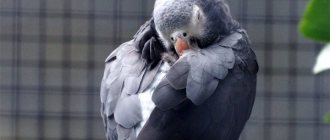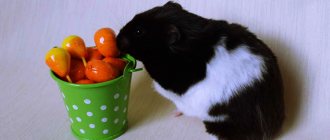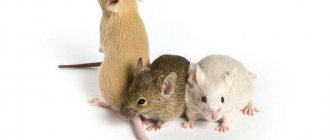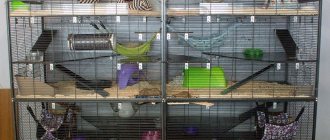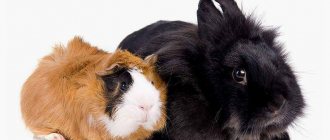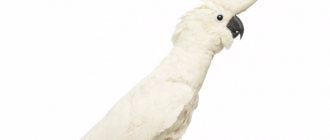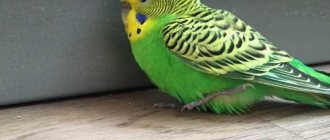You can legally purchase a pet that was bred in captivity. By the way, some species of parrots are contained in the Red Book. International laws prohibit the capture and sale of such individuals.
The price of a parrot is determined by the following factors:
- origin (kennel, legal import or smuggling);
- species/breed;
- floor;
- age;
- color;
- how the chick was fed (human participation or will);
- place of sale (pet store, market or nursery).
If the bird is brought from abroad, there must be documentation:
- CITES (certifies that the lovebird is not an endangered species);
- laboratory studies for psittacosis, salmonellosis, bird flu, Newcastle disease;
- veterinary certificate from the state of import and export confirming the health of the parrot;
- paper on tests performed in the receiving state after a 30-day quarantine;
- day-old chicks in captivity must be ringed, and the ring on an adult pet is not removed.
Note. If you purchase a parrot without paperwork, you run the risk of bringing a sick bird into your home, thereby exposing your own family to a tropical disease.
Inexperienced parrot owners often wonder how much small birds cost, since budgies, as well as lovebirds, are easier to care for. Next, we will get acquainted with the most popular and affordable breeds, and also compare prices for some types of rare birds.
Budgerigar: how much does it cost?
This type of parrot has long gained popularity. Small in size, with a cheerful disposition, easy to care for and feed - these criteria contribute to the selection of budgies for keeping at home. Wavys live next to their owner for about 15 years. The ability to speak words for the owner affects the cost of the bird. To fulfill this need for training, you should buy a wavy friend no older than 2 months.
In Moscow, budgerigars sell from 700 to 5,000 rubles. nurseries, from 500 to 1,700 rubles. – private individuals, from 1,500 to 4,000 rubles. – pet stores. In regional centers, nurseries sell from 600 to 1,500 rubles, private individuals - from 500 to 1,500 rubles, pet stores - from 900 to 2,600 rubles.
Macaw parrot: how much does it cost?
Such pets are an endangered species. The breed affects how much a large parrot is valued at. Fashionable varieties are more expensive: small macaw, hyacinth and green-winged.
A large individual, reaching a length of a meter, needs to be kept in an enclosure. A parrot that is raised in captivity adapts quite quickly to new conditions and can be trained. However, talkativeness is at a weak level. Such birds remember several dozen words. Russian nurseries practically do not deal with this breed; it is difficult to find a macaw in a pet store. Private owners are a suitable market, but buying poultry on the black market should not be prematurely rejoiced. Long transportation can affect the condition of the parrot. For a chic, exotic handsome man, the price is appropriate. In Moscow, nurseries sell macaws from 100 to 170 thousand rubles, private individuals - from 110 to 200 thousand rubles, pet stores - from 130 to 180 thousand rubles. It is almost impossible to find a macaw in the regions.
Reproduction in captivity
Breeding parrots of this breed is quite a troublesome task. Beginners should carefully study this issue, consult with experienced specialists, and then find a mate for their pet. It is impossible to determine the sex of a bird by appearance; this can only be determined by conducting tests or experimentally in an aviary.
The female incubates the laid eggs (2-3) for a month. Sometimes less, it depends on the breed of cockatoo. The chicks are born helpless: they are blind and have no feathers. The eyes open after a week, and by 10 days the gaze becomes meaningful. The first feathers appear after about two weeks on the wings and the back of the head, full plumage occurs after two months.
The rarer the breed of parrot, the more difficult it is to breed it in captivity. Reproducing the population of this endangered bird species is a noble and rewarding endeavor. Buying this red book is expensive, but it will more than pay off if you are ready to devote maximum attention and time to your pet.
How many rubles can you buy a gray coat for?
The large gray pet has the intelligence of a 4-year-old child. Therefore, it makes sense to teach your parrot human speech. If you devote 5-6 hours a day, it is quite possible to achieve answers to basic questions and memorize words/phrases. These pets live from 50 to 60 years. The more words a Gray knows, the more expensive it is valued. On the black market, an untrained parrot can be bought for 15-35 thousand rubles, but no one will give a guarantee. In Moscow, nurseries sell Grays from 55 to 90 thousand rubles, private owners - from 55 to 110 thousand rubles, pet stores - from 40 to 85 thousand rubles. In regional centers you can find Grays from private individuals for 55-85 thousand rubles.
Corella: how much does it cost?
A characteristic feature of the cockatiel is its crest. In a calm state, the forelock is smoothed; when excited, it straightens out. The weight of an individual is from 180 to 200 g. The cockatiel has no pronounced skills; it remembers and produces from 10 to 20 words. However, he is fluent in gestures. The parrot needs to fly, so you need to constantly let the pet out of the cage or put it in a free enclosure. In Moscow, you can buy a cockatiel in a nursery from 2.5 to 9.5 thousand rubles, from a private person - from 4 to 6 thousand rubles, in a pet store - from 3.5 to 5 thousand rubles. In regional centers, Corella is cheaper by about 1 thousand.
Where and for how much can you buy a cockatoo?
These parrots show high learning abilities. Cockatoos are ready to repeat words/phrases and sounds after their owner (dog barking, laughter, the sound of rain, household appliances). They live up to 50 years. The official marketing of cockatoos is poorly developed, since breeding involves large costs. Cockatoos are brought to nurseries in the capital from Europe. The price depends on the variety. In Moscow, a pet can be purchased at a nursery from 60 to 150 thousand rubles, from a private owner - from 80 to 140 thousand rubles, in a pet store - from 60 to 190 thousand rubles.
What other types of parrots do breeders and fanciers choose:
- Amazon.
- Rosella.
- Monk.
- Kakarik.
- Necklace parrot.
Greetings from the warm tropics!
Amazons are parrots brought to Russia from tropical corners of the earth. Their length does not exceed 50 cm, including a short tail. The bulk of the birds are green with small colored spots.
These parrots were tamed back in the time of Columbus, because they quickly adapt to the environment and eat common grains. They do not need to be pampered with fruits and nuts often.
Breeders must understand that in a new home the pet will behave constrained, but when contact is established, the Amazon becomes completely tame, often even arrogant. It should be mentioned that these animals are real screamers. Therefore, before purchasing, you should make sure that there are no problems associated with noisy birds.
About 100 phrases and words are retained in the parrot's memory. Amazon is able to imitate musical instruments and reproduce melodies. He agrees to demonstrate his successes in front of guests at home, because attracting attention seems to be the meaning of his life. For a feathered artist you will have to pay an average of 30,00 rubles .
Choosing a parrot: should you save money?
Before purchasing a pet, you should study the maintenance and care requirements. Large birds are the most capricious. In addition to a variety of food and a free enclosure, you need to spend 5-6 hours a day with your pet. You must not only play with a parrot, but also train it, otherwise the bird will pluck the feathers on its chest and peck at the skin until it bleeds. The disease lasts a long time and is difficult to treat.
Bird prices are much higher at the nursery, but your safety and your pet's safety should always come first.
Make the right choice and let your pet please you for many years.
www.zoo-ekzo.ru – Exotic animals
Appearance
Length from 9.5 cm to 1 m. The plumage is small and quite sparse. Most parrots are very brightly colored, with the predominant color usually being a bright grass green. It is especially characteristic that the brightly colored fields are sharply delimited from one another, and their colors are often complementary colors of the spectrum (green and purple, bluish-violet and light yellow, etc.). Young parrots are usually colored the same.
The most characteristic feature of the order is the beak. The height of the beak at the base is more than twice its width, and sometimes exceeds its length. Parrots can peck very hard fruits with their beaks, and when climbing they cling to branches with their beaks. The legs are rather short, thick, feathered to the heel. The 1st and 4th toes on the paws are turned back, so that parrots not only grasp branches well with their paws, but can bring food to their beak with their paws. The claws are strongly curved, but rather weak. The wings are large and pointed. The flight is fast, but usually over a short distance.
The skull of parrots is distinguished by its width. The brain is relatively large; characterized by good memory and the ability to onomatopoeize (voice muscles are well developed). The tongue is short, thick and fleshy.
The main feature of the beak of parrots is that it serves not only for obtaining and grinding food, but also as an organ of movement. Figuratively speaking, a parrot's beak is its third leg. The beak-hook caught on a twig - he freed his paws, pulled his body up, grabbed the next step with his mobile fingers, then again threw the beak-hook higher. It is with these unique techniques that parrots move quickly both in the forest and in their homes in the zoo; at the same time, they can hold a fruit or nut in their beak and snack on it as they go.
Habitat
They inhabit subtropics and tropics, most numerous in the Australian faunal region (the probable center of origin of the order). Also distributed in Southeast Asia, India, West Africa, South America and Central America.
Mainly arboreal birds; live in forests, less often in open spaces; few species penetrate high into the mountains. They often live in packs. With rare exceptions (nestor), they lead a diurnal lifestyle.
In nature
Mainly herbivores, the main food is fruits and seeds of plants. Loris parrots feed primarily on pollen and nectar. On occasion, they are ready to feast on animal food - insects and their larvae, worms. Keas also eat carrion; some individuals are even capable of killing adult sheep, but the frequency of such cases is low.
They nest in hollows, termite mounds, burrows, some on the ground; Argentine parrots (Myiopsitta) build colonial nests in trees. Monogamous. There are 1-12 (usually 2-5) eggs in a clutch. Most are incubated by the female. The chicks hatch naked and blind; their parents feed them burps from their crops.
Captivity
To keep your bird healthy, you need to feed it as much live food as possible. Live foods - vegetables, fruits and whole grains. Dead foods are those that can be stored for a long time (such as packaged nuts and seeds). This is, of course, a simplified definition, but, nevertheless, it is quite accurate. A healthy, proper diet can extend your pet's life by decades.
Vegetables: Carrots (lightly cooked for better absorption of beta-carotene), string beans, corn, zucchini, peas, broccoli, sunflower sprouts, pea shoots, sprouted seeds and beans (excellent source of protein) are all very healthy. If your bird refuses to try any of this, try sprouting his dry food. It will be more familiar to her, and in its sprouted form this food is a much healthier food (for example, it contains less fat, but more amino acids).
Grains: You can sprout a variety of grains at home. Millet and quinoa work very well for this. Also, for many parrots, boiled brown rice and quinoa are a real treat. Quinoa is a grain that grows in South America, so those parrots that are native to that region probably tried it when they lived in the wild. It is better to choose food that grows in your pet’s natural habitat.
Fruits: They are high in sugar, so don’t try to replace vegetables with them. Vegetables should always make up the majority of a bird's diet. There is no need to give your parrots large amounts of fruit. For many parrots, grapes are a favorite treat. Give your birds only fruits grown with organic fertilizers. It is recommended to wash fruits with a special liquid that washes away pesticides and harmful microorganisms.
Do not, under any circumstances, offer your parrots strawberries. Carcinogenic substances used in its cultivation on an industrial scale should, in theory, lose their potency long ago, but their constant use by gardeners slows down this process.
Seeds: Use a good fresh seed mix for feed. If you are not sure about the quality, try sprouting it. If the seeds have not sprouted after a few days, they are dead and have no nutritional value. It is necessary to provide seeds in such quantities that the birds do not refuse vegetables. Seeds can always be in the feeder, as they do not spoil.
Pellets: There are a wide variety of pelleted foods on the market. You can hear both rave reviews and chilling stories about them. For those veterinarians who support the use of pelleted food and claim that in the wild parrots eat more than just seeds, the answer is that they do not eat pelleted food AT ALL. However, sometimes it can be recommended to add such food to the bird's diet, especially during the breeding season, since it contains a large amount of protein.
What we humans eat: pasta, whole grain bread, pieces of boiled chicken and other human food can sometimes be given to birds. The main thing is that it makes up a small part of the diet. Do not mouth feed or bite off pieces for the bird. Your mouth contains a large amount of bacteria that can harm your bird's health. Make sure that the chicken is cooked very well and do not leave perishable food in the cage for more than 1 hour.
Cooking: When cooking for birds, follow the same rules as when preparing food for other members of your family. Salmonella, Escherichia coli, Listeria and other pathogenic microorganisms found in food will not add health to your pet.
It is forbidden to give parrots any food or drink containing theobromine. It is found in chocolate, cocoa, coffee, tea and can cause heart rhythm disturbances and death in birds.
Avocados are poisonous to many species of parrots, especially African parrots. Just in case, do not feed it to any of your pets.
The high intelligence of parrots requires that the environment not be monotonous and boring. If you don't pay attention to the bird, it can literally go crazy. Out of boredom, parrots begin to pluck their feathers and sometimes fall into deep depression. If you know you won't have time to handle the bird, it's best not to buy it at all. If, having bought it, you realized that you cannot pay enough attention to it, find other owners for it (and do not ask to be paid the money that you yourself gave for a healthy, happy chick). A parrot is a living, breathing, thinking and feeling creature. Any cruelty (and even inattention can be cruel) will sooner or later come back to you. This is the law of life. So don't be indifferent!
Give your parrot a variety of toys that are safe for his health. Change them regularly. It's boring to constantly play with the same thing. Throw away toys that are broken, dirty, or dangerous. For example, if you do not remove frayed string in time, then one day you may find that your bird has suffocated while playing with it.
Parrots need communication. By nature they are school creatures. They should not be kept isolated, they should feel like part of the family. In addition, the more time they spend outside the cage, the easier it will be to communicate with them. Of course, not everyone has the opportunity to keep a bird near them all day long. In this case, release the bird from the cage as soon as you get home. Get up a little earlier in the morning to spend some time with your pet. Do not keep your parrot in the bedroom, where he will see you for a few minutes in the morning and an hour in the evening before going to bed. Boredom can cause behavior problems in birds.
Many birds like to make "bird soup" by dipping pieces of food into a bowl of water. Sometimes this problem can be solved by moving the water cup to a different location, but some birds will still drag dried carrots across the cage to drop them into the water. An automatic drinker also does not solve the problem of water pollution. Food gets into the water the first time the bird starts drinking. To be honest, this type of drinker is much more difficult to clean. It's best to have several clean bowls ready. If you are in a hurry and don't have time to wash the bowl, just take it out of the cage, put another one in there and everything is fine. The hotter the weather, the greater the risk that bird soup will turn into a funeral dinner.
Dangers in the home include poisonous plants, aerosols, electrical cords, kitchen utensils with Teflon and other non-stick coatings, and small parts that birds can chew off and swallow.
For the safety of the bird, it is useful to clip its wings. It often happens that a bird with unclipped wings flies out of an open window or door. Your pet can be injured by a fan, and there have been cases where birds have drowned in the toilet. This can of course happen to any bird, not just those with unclipped wings, so be sure to keep the lid closed. You should also understand that, unlike you, not everyone will carefully close the door. Children especially often accidentally forget to close it. Your pet may not want to leave you, but if he gets scared, he may fly straight out the open door. Very quickly, the poor thing will find itself several kilometers from its home and will wonder why its beloved owner does not come for it. Small birds often become prey to larger ones. But in any case, the choice is yours. If you think your bird would rather be a predator's lunch than have its wings clipped, then...
A small note: you don’t need to shorten the bird’s wings too much. She should be able to make short flights. You just need to make sure that it cannot rise into the air. The wings should be trimmed fairly often as the feathers grow back quickly. If you clip the wings of small birds in this way, there is a risk that they will still be able to fly away outside if the wind gives them the necessary height. There are frequent cases where Australian parrots have flown away despite their wings being clipped. Their aerodynamic qualities allow them to fly quite high in fairly windy weather.
Once you have adopted your bird, immediately find a qualified avian veterinarian. Don't wait for the moment when your pet will sit helplessly, ruffled, at the bottom of the cage. A scheduled inspection costs less than an urgent call.

